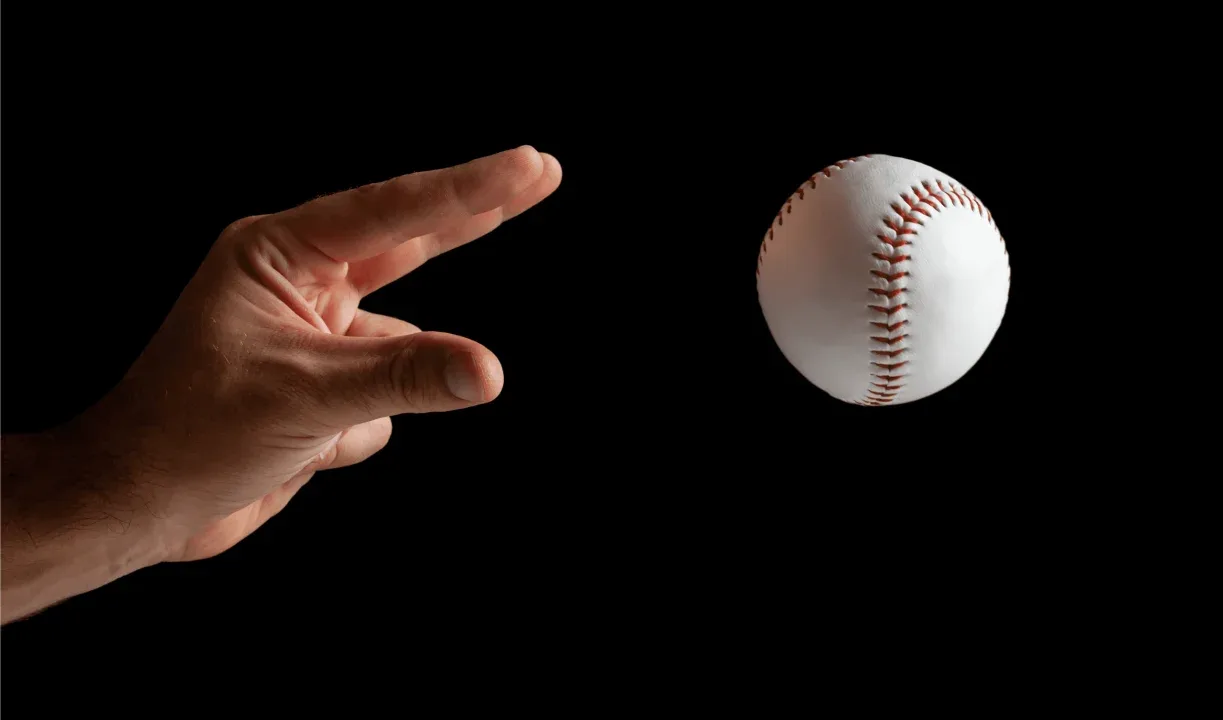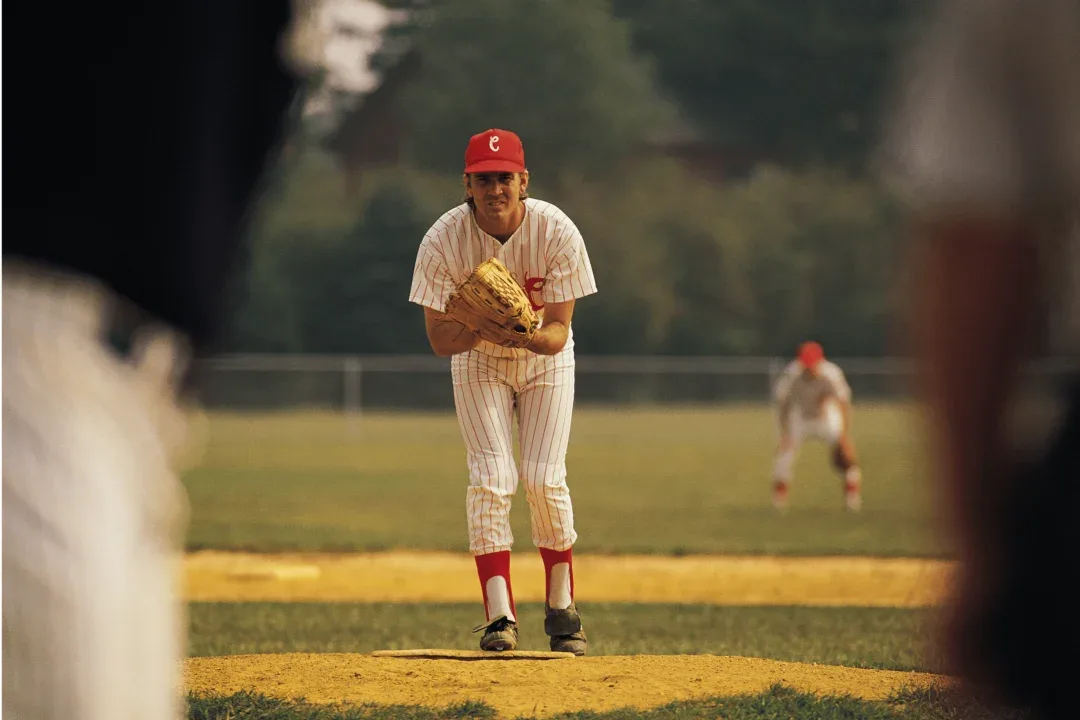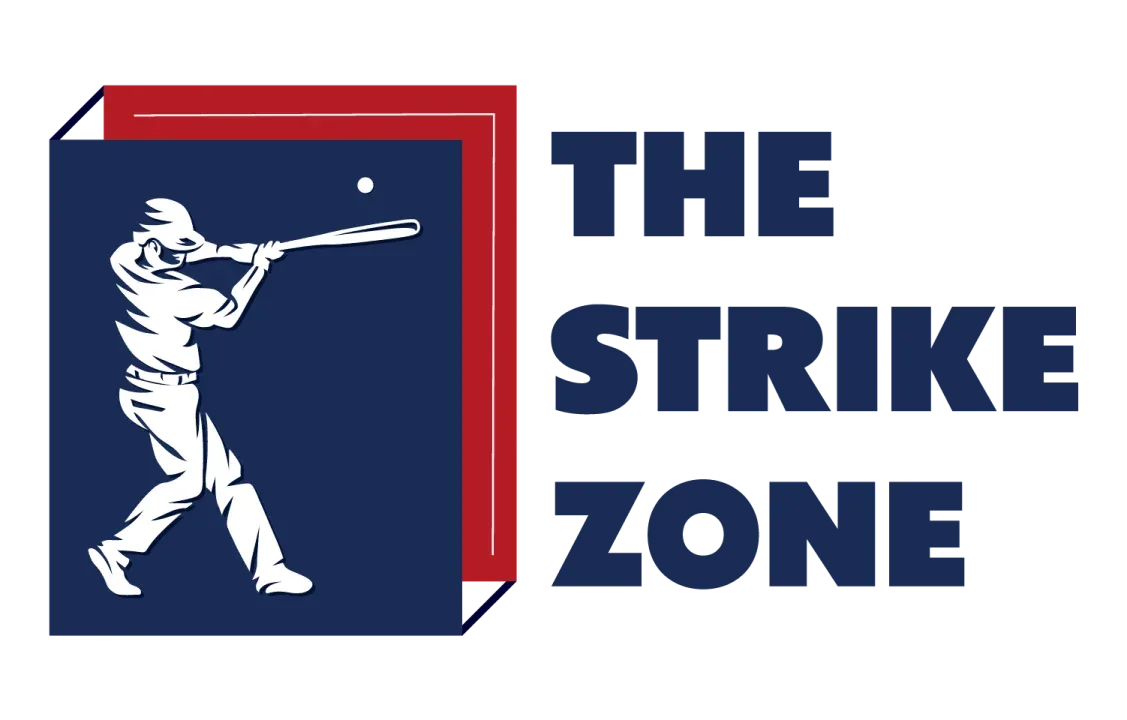Table of Contents
ToggleIntroduction
Welcome to the world of baseball! It’s an exhilarating sport that demands a great deal of skill, strategy, and athleticism. One of the most important baseball skills how to pitch a baseball – throwing the ball to the batter. There are many ways to rise in baseball, and each method has advantages and disadvantages. This article offers a comprehensive guide on pitching in baseball, including the various types of pitches and some helpful tips for throwing effective pitches. Whether a beginner or a professional pitcher, you can develop your abilities and become a better player with the aid of this tutorial.
The Fundamentals of How to Pitch a Baseball

The Fundamentals of How to Pitch a Baseball
Pitching is a crucial part of baseball, and understanding the fundamentals is essential for success. Here are six key aspects of pitching:
1. Gripping the ball is crucial for control and variety in pitches. Knowing how to grip various pitches is essential.
2. Windup and stretch positions are important for different game situations. Windup is useful when there’s no one on base, while the stretch is best when runners are on the ground.
3. Proper pitching mechanics include body posture, arm slot, and speed. Arm angles also play a role in getting the desired movement.
4. Pitch velocity is measured in MPH and is critical to effective pitching. Practice and conditioning can help increase speed.
5. Quality pitches, including the ability to throw various pitches consistently, are essential.
6. Mental preparation, confidence, and focus are key to pitching success. To improve your skills and refine your strategy., it’s important to practice consistently.
– Windup and delivery
Windup and delivery are essential components of pitching in baseball. In the windup position, the pitcher begins with both feet on the rubber and their back to home plate. From here, they will step back with their lead foot and lift their back leg while bringing their arms overhead. They will release the ball toward home plate and bring their leg forward.
In the stretch position, the pitcher stands with one foot on the rubber and the other foot just ahead of it. From here, they bring their hands together while looking towards the base runner(s) to keep them in check. The pitcher lifts their lead leg and delivers the ball to home plate.
Proper form and mechanics are crucial to ensure accuracy and consistency in both the windup and stretch positions. Practicing these positions can help increase the pitcher’s effectiveness on the field.
– Proper grip on the baseball
The proper grip on the baseball is essential to pitching effectively in baseball. The most commonly used pitch is the 4-seam fastball. To throw this pitch, grip the ball with the horseshoe seam facing inward, and place your fingers across the seam. Other grips include the 2-seam fastball, split-finger fastball, and circle change-up grip. Each grip can result in different types of pitches and extra movement. Finding a grip that works for you and practicing it is important to achieve quality pitches regularly.
– Importance of balance and footwork
Balance and footwork are crucial to effective pitching in baseball. With proper credit, you can control your pitches accurately, no matter how hard you throw. Good footwork allows you to generate more power and velocity behind your pitches. Coaches always stress the importance of balance and footwork during pitching practice. You must work on maintaining a stable base and be mindful of your foot placement and landing. You can improve your balance and footwork with practice, producing more quality pitches. Please pay attention to these tiny nuances because they have a major impact on how effective your pitch is.
Pitching Techniques
– Fastball: how to throw it and variations (four-seam, two-seam, cut)
A fastball is a fundamental baseball pitch involving throwing the ball at high speed toward the batter. The pitcher grips the ball with four fingers on the seams that run perpendicular to the ground to throw a four-seam fastball. A 2-seam fastball involves holding the ball with two fingers on the seams that run parallel to the floor, causing downward movement to the pitch. A cut fastball moves slightly to the side and is thrown with fingers somewhat off-center on the seams. To develop a strong and accurate fastball, it is essential to practice regularly and focus on every detail.
– Breaking Balls: curveball, slider, and change up
Breaking balls are pitches that move unpredictably, making them hard for batters to hit. The three most common breaking balls are curves, sliders, and change-ups.
– Curve balls break down to the side, thrown with spin and wrist snap.
– Sliders break sharply to the side, thrown with off-center seams and a side-arm motion.
– Change-ups look like fastballs but are slower, relying on location and deception. They’re thrown with a circle change-up grip and fastball motion.
Pitchers who master these breaking pitches become more effective on the mound and harder to hit.
– Tips for throwing a knuckleball
The knuckleball is a challenging pitch to perfect, but pitchers can make good use of it with persistence and repetition. A few pointers for throwing a knuckleball are as follows:
1. Focus on the grip: The key to a good knuckleball is the grip. Hold the ball with your fingertips while keeping them spaced out. Avoid putting pressure on the ball with your palm.
2. Keep your wrist loose: A tight wrist will cause the pitch to spin, which is not what you want. Keep your wrist open and relaxed to allow the ball to flutter and dance in the air.
3. Use a slower delivery: A knuckleball requires a slower delivery than other pitches. Focus on a smooth, slow motion to give the ball time to move and break.
4. Embrace the unpredictability: A knuckleball is known for its unpredictability, and that’s part of its effectiveness. Embrace that no two knuckleballs will look the same and use it to keep batters guessing.
If you want to enhance your pitching skills and become a versatile pitcher, it’s essential to adhere to these tips and practice knuckleball regularly.
Pitching Drills

Pitching Drills
– Importance of warming up before pitching
Warming up before pitching is crucial for every major league baseball pitcher. The warm-up primes the muscles for the intense physical demands of pitching while also getting the body and mind in sync. Starting with a few minutes of light cardiovascular exercise and several dynamic stretching exercises, such as lunges and high knees, can help prevent injuries and improve performance. Skipping a warm-up can lead to poor mechanics, reduced throwing velocity, and an increased risk of muscle strains, muscle pulls, and other injuries. It’s crucial to properly warm up before throwing by taking the appropriate time to stay healthy and perform at your best.
– Drills to improve accuracy
Accurate pitching is crucial for baseball players looking to impact the game. Here are some drills that can help improve accuracy and take your pitching game to the next level.
1. Target Practice: Place a target on the catcher’s glove and focus on hitting the mark consistently. Start with slow pitches and work your way up to faster ones.
2. Pitching into Zones: Divide the strike zone into sections and aim to pitch consistently into each spot. This drill can help improve control and accuracy.
3. Long Toss: Practice throwing from one end of the field to another, gradually increasing the distance. This can improve arm strength and accuracy.
4. The Towel Drill: Hold a towel like a ball and practice your pitching motion. This can help improve mechanics and accuracy.
5. One-Knee Drill: Pitch from one knee to help develop a consistent release point and improve accuracy.
Incorporating these drills into your training regimen can improve your pitching accuracy and overall performance on the field.
– Exercises to build arm strength
To build arm strength for better pitching performance:
1. Do weight training exercises focusing on shoulders, arms, and wrists, like bicep curls, tricep extensions, and wrist curls.
2. Use resistance bands for exercises like external and internal rotations.
3. Try medicine ball activities such as overhead throws, and chest passes.
4. Do push-ups to build upper body strength, including your pitching arm.
5. Incorporate plyometric exercises like clap push-ups and medicine ball slams to improve explosive power in your arm.
Following these exercises can strengthen your pitching arm and improve your performance on the field.
Mental Preparation for Pitching
1. Visualize success: See yourself executing your pitches successfully before the game. Imagine throwing strikes, getting batters out, and performing well.
2. Positive self-talk: Boost your confidence by using positive self-talk. Tell yourself you’re a great pitcher and succeed on the mound.
3. Deep breathing: Control your breathing to stay calm and focused on the mound. Take deep breaths before each pitch to slow down your heart rate.
4. Develop a pre-game routine: Create a routine to help you get the right mindset before the game. This could involve listening to music, stretching, or meditating.
5. Focus on the present: Don’t dwell on past mistakes or worry about the future. Keep your mind on the present and concentrate on the upcoming pitch.
By practicing these mental preparation techniques, pitchers can improve their performance and become more confident on the mound.
– Visualization techniques
Visualization is an important mental technique that can improve your pitching performance. Here are some tips for incorporating visualization into your pitching practice:
1. Create a mental image of yourself performing the perfect pitch.
2. Visualize the ball’s trajectory as it leaves your hand.
3. Focus on your form and technique, imagining each movement in detail.
4. Use positive self-talk to reinforce your confidence in executing the pitch successfully.
5. Repeat the visualization process until it becomes second nature.
Visualizing successful pitches before the game can improve your pitching performance and increase your chances of success on the mound.
– Developing a pre-pitch routine
Developing a pre-pitch routine is crucial for any baseball pitcher. Good practice will help you focus, stay in the moment, and deliver your best pitch. I can help you establish a plan before you make your pitch.
1. Clear your mind: Take a deep breath and clear your mind of distractions.
2. Visualize the pitch: Picture the pitch you want to throw and visualize it leaving your hand.
3. Set your grip: Get a comfortable grip on the ball and make any necessary adjustments.
4. Find your stance: Position your feet according to the pitch you want to throw.
5. Check your target: Look at it and focus on hitting it.
6. Prepare to release: Get into your pitching motion and prepare to release the ball.
7. Execute the pitch: Follow through and let it go.
Remember, a pre-pitch routine is personal and should be tailored to your needs and preferences. Practice your way consistently and make adjustments as necessary to ensure that it helps you deliver your best pitch consistently.
– Staying focused during a game
To stay focused during a baseball game, follow these steps:
1. Visualize success before each pitch to build confidence and maintain focus.
2. Establish a pre-pitch routine to center your focus and prepare for the upcoming pitch.
3. Maintain a positive mindset by not dwelling on past mistakes or negative thoughts.
4. Block out distractions such as fans or chatter from the opposing team and trust your abilities. You can consistently execute pitches and help your team succeed by staying focused.
Common Pitching Mistakes

Common Pitching Mistakes
1. Lack of Consistency: Pitchers must have a consistent and repeatable pitching motion to throw strikes consistently.
2. Poor Mechanics: Proper mechanics are essential to avoid inaccurate pitches and injury.
3. Losing Control: Focus on control to avoid walks, hit batters, and big innings for the opposing team.
4. Overthrowing: Quality over velocity is important to maintain accuracy.
5. Lack of Pitch Variation: Develop a variety of pitches to keep hitters off balance.
6. Poor Pitch Selection: Understand the strengths and weaknesses of each pitch in your repertoire and choose the right angle for each situation.
– Overthrowing and its consequences
Overthrowing is a common mistake pitchers make when throwing every pitch as hard as possible. This can be a reason for the loss of accuracy and control, resulting in walks and hits for the other team. Pitchers need to focus on pitch quality rather than velocity to avoid overthrowing.
– Inconsistent release point
If your release point is consistent when pitching, it can positively impact your performance. This is because releasing the ball from different facts can lead to inaccurate pitches and give the batter an advantage. To improve your consistency, focus on your arm slot and speed, replicate the feeling of a good pitch, work on your mechanics, and practice regularly. You can improve your effectiveness and consistency as a pitcher by doing this.
– Lack of variety in pitches
A lack of variety in pitches can harm a pitcher’s success. It makes it easier for batters to anticipate angles, allowing more hits and runs. Professional pitchers typically have a repertoire of several different pitch types, including fastballs, breaking balls, and off-speed pitches. It’s crucial to vary the pitch types, velocities, and movements to keep hitters off balance and make it more difficult for them to smash the ball. Additionally, throwing different pitches effectively can make a pitcher more versatile and valuable on a team.
FAQ Section
Q: What is a four-seam fastball?
A: A four-seam fastball is a type of pitch where the ball is thrown with the four seams facing forward, resulting in little to no spin and a straight trajectory. It is often the fastest pitch in a pitcher’s arsenal.
Q: What are some other types of pitches in baseball?
A: There are many other pitches in baseball, including the two-seam fastball, curveball, slider, change-up, splitter, knuckleball, and more.
Q: Does being a left-handed or right-handed pitcher make a difference in how a pitch is thrown?
A: Yes, being left-handed or right-handed can impact the direction and movement of a pitch. For example, a left-handed pitcher’s curveball will generally break in the opposite direction of a right-handed pitcher’s curveball.
Q: How does pitch velocity affect a pitcher’s success?
A: Generally, the faster a pitch is thrown in miles per hour, the harder it is for the batter to make contact. However, a pitcher who can vary their speed and mix in off-speed pitches can also find success.
Q: Can you provide some tips on what to avoid when pitching?
A: Some common mistakes include telegraphing pitches, not varying the speed or location of pitches, tipping pitches, and overstriding.
Q: How can I improve my pitching mechanics?
A: The middle finger plays an integral role in the mechanics of pitching a baseball. The ball’s grip affects how the pitch moves and behaves in the air, and the positioning of the middle finger ultimately affects where that ball will go once it leaves the pitcher’s hand. If a pitcher holds their middle finger too high on the ball’s seam, they may be resulting in more vertical movement than they intended, resulting in a higher or lower pitch than expected.
Q: Can a pitch with extra movement be more effective than a straight pitch?
A: Yes, a pitch with extra movement, such as a curveball or slider, can be more difficult for batters to hit. However, throwing pitches with good control and accuracy is important.
– How often should I practice pitching?
To become a successful pitcher, it is important to practice regularly. Ideally, pitchers should practice several times weekly, focusing on their mechanics, pitch control, and velocity. It’s also important to practice against live batters to learn how to pitch in game-like situations. However, be sure to do it and avoid injury. It’s important to rest between practices and listen to your body. Ultimately, consistent practice time is key to improving your pitching skills.
– What common injuries are associated with pitching, and how can I prevent them?
Pitching can be challenging and cause wear and tear on a player’s body over time. Rotator cuff injuries, elbow injuries, and shoulder soreness are some of the most typical pitching-related harms.
To prevent these injuries, it’s important to properly warm up before pitching, maintain good posture and mechanics during the pitch, and gradually increase the intensity and duration of your pitching sessions. Strengthening the muscles in your shoulders and arms and maintaining flexibility through regular stretching can also help prevent injuries.
It’s also important to rest when necessary and listen to your body. If you feel pain or discomfort while pitching, it could indicate that you need to relax or get medical help. With proper attention to injury prevention, pitchers can continue to enjoy the sport with less risk of injury.
– How can I improve my pitching velocity?
Improving your pitching velocity requires a combination of proper mechanics and physical conditioning. Focus on strengthening your core, legs, and shoulders with squats, lunges, and weighted rotation exercises. Additionally, practice appropriate pitching mechanics to optimize your arm speed and leverage. Work with a coach or trainer to fine-tune your mechanics and incorporate drills and exercises targeting pitch velocity. Consistent practice, conditioning, and proper mechanics can help increase your pitching velocity.
– How do I handle arm soreness while pitching?
If you are experiencing arm pain while pitching, it is important to stop immediately to avoid further injury. Rest the affected arm and apply ice to reduce swelling. If you’re experiencing pain, it’s important to seek medical help immediately. This will help identify the root cause and ensure you receive the right treatment. Continuing to pitch with arm pain can lead to further injury and prolong recovery time. It is also crucial to properly warm up and stretch before throwing to prevent damage in the first place.
Conclusion
In conclusion, pitching is a crucial aspect of baseball and requires skill, technique, and practice to master. There are a variety of pitches that pitchers can utilize, including fastballs, breaking balls, and off-speed pitches. Pitch velocity and movement can greatly affect a pitcher’s success on the mound. Pitchers must pay attention to their mechanics and arm care to prevent injury. With dedication and hard work, pitchers can become effective and successful on the mound at both amateur and professional levels.
– Recap of the article’s main points
This article covered various aspects of pitching in major league baseball, such as the different types of pitches, the mechanics of pitching, and how to throw a pitch effectively. We discussed common angles used by professional pitchers, including the 4-seam fastball and off-speed pitches and more challenging slopes like breaking balls and knuckleballs.
We also explored the importance of arm speed and angle in pitching and pitchers’ windup and stretch positions. Runners on base and the type of right-handed hitter facing the pitcher can also affect the pitch selection and delivery.
Overall, pitchers must strive to consistently throw quality pitches with the right velocity and movement to compete professionally.
– Encouragement to keep practicing and refining pitching skills.
To become a great pitcher, there’s no substitute for hard work and dedication. Consistently practicing your pitching mechanics and refining your technique is key to mastering your pitch types and delivering quality pitches. It’s important to stay focused and not let failure discourage you. Instead, use it as a chance to analyze your performance and find ways to improve. You can continually improve your pitching abilities and dominate on the mound by possessing patience, perseverance, and the correct mindset.

